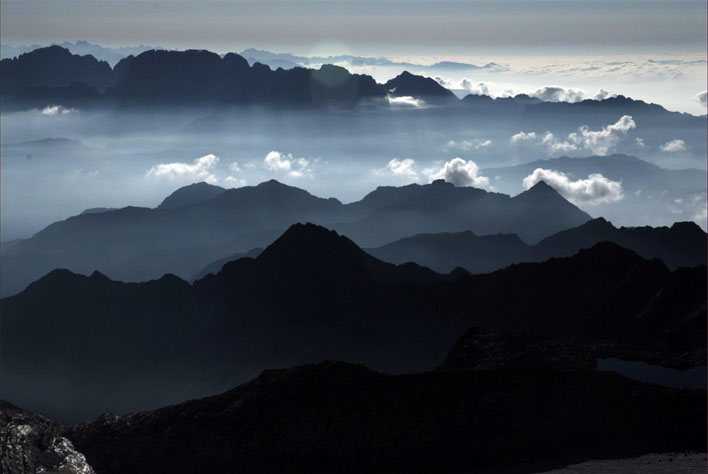“La Svizzera. Una prigione?” Reazioni letterarie e pittoriche alla ristrettezza elvetica
Abstract
The border is not just a line; it's a space which shows a sense of belonging to a community and to a region. Swiss borders appear extremely strict and insurmountable if we consider the essay by Friedrich Dürrenmatt Die Schweiz: ein Gefängnis (1990) in which he compares the small country to a prison: the Swiss themselves choose this detection because only in this prison they feel safe from outward aggression. Neutrality is a source of suffering and has an ambivalent connotation: it makes sure to be free from the worldwide conflicts but, at the same time, it makes prisoners because it limits the freedom to act. What emerges from the words of one of the most important Swiss writers of the twentieth century and from the most part of the Swiss intelligentsia is the indication of a deep identity crisis, a desire to escape the narrowness Paul Nizon wrote about in 1973 in his essay Diskurs in der Enge, in which he also implies a lack of freedom in Swiss Literature: in Swiss daily life nothing happens. The Swiss writer could describe his daily life, but he would be obvious, meaningless or simply boring. Narrowness is therefore the main precondition for a Swiss artist and it causes the escape. Escape and isolation are recurring themes in the art of painting (for example in the works of Giacometti and Meret Oppenheim) too.
Downloads
Riferimenti bibliografici
Behrendt, Eva, "Oh Heimat, oh Schutz vor dir", Frankfurter Rundschau, 23.09.2008, http://www.fr-online.de/in_und_ausland/kultur_und_medien/feuilleton/1599537Gewaltig-west-es-imBerg.html, online (ultimo accesso 03/06/2010).
Bichsel, Peter, Des Schweizers Schweiz, Frankfurt am Main, Suhrkamp, 1997.
Chessex, Jacques, De l'encre et du papier, Lausanne, La Bibliothèque des arts, 2001.
Chessex, Jacques, Le dernier crâne de M. de Sade, Paris, Grasset, 2009.
Dürrenmatt, Friedrich, Kants Hoffnung. Zwei politische Reden, Zürich, Diogenes, 1991.
Hugendick, David, "Verloren an diesem Ort", Die Zeit,24.09.2008, http://www.zeit.de/online/2008/39/christian-kracht, online (ultimo accesso 03/06/2010).
Hürlimann, Thomas, Himmelsöhi, hilf! Über die Schweiz und andere Nester, Zürich, Ammann, 2002.
Hürlimann, Thomas, Das Holztheater. Geschichten und Gedanken am Rand, Zürich, Ammann, 1997.
Jaton, Anne Marie, Jacques Chessex. La lumière de l'obscur, Genève, Éditions Zoé, 2001.
Nizon, Paul, Diskurs in der Enge, Frankfurt am Main, Suhrkamp, 1990.
Porombka, Wiebke, "Eidgenosse Lenin", Die Tageszeitung, 20.09.2008, http://www.taz.de/1/archiv/printarchiv/printressorts/digiartikel/?ressort=ku&dig=2008%2F09%2F20%2Fa0129&cHash=a1e83f7729, online (ultimo accesso 03/06/2010).
Reinacher, Pia, Je Suisse, München-Wien, Nagel & Kimche, 2003.
Spedicato, Eugenio, Friedrich Dürrenmatt e l'esperienza della paradossalità, Pisa, ETS, 2004.
Sitografia
Articolo 197 del Codice penale svizzero, http://www.admin.ch/ch/i/rs/311_0/a197.html, web (ultimo accesso 03/06/2010).
Rodoni, Laureto, “Why Do I Feel the Need to Paint Faces?”, http://en.asia.it/cgi-bin/adon.cgi?act=doc&doc=371&sid=92, web (ultimo accesso 03/06/2010).
Informazioni sul copyright
Questa licenza permette a terzi di riprodurre, distribuire, comunicare al pubblico, esporre in pubblico, rappresentare, eseguire, recitare e modificare quest'opera, purché vengano citati l'autore e la rivista. Questa è la più ampia tra le licenze Creative Commons, rispetto alle libertà concesse a terzi sulle opere licenziate sotto Attribuzione.









